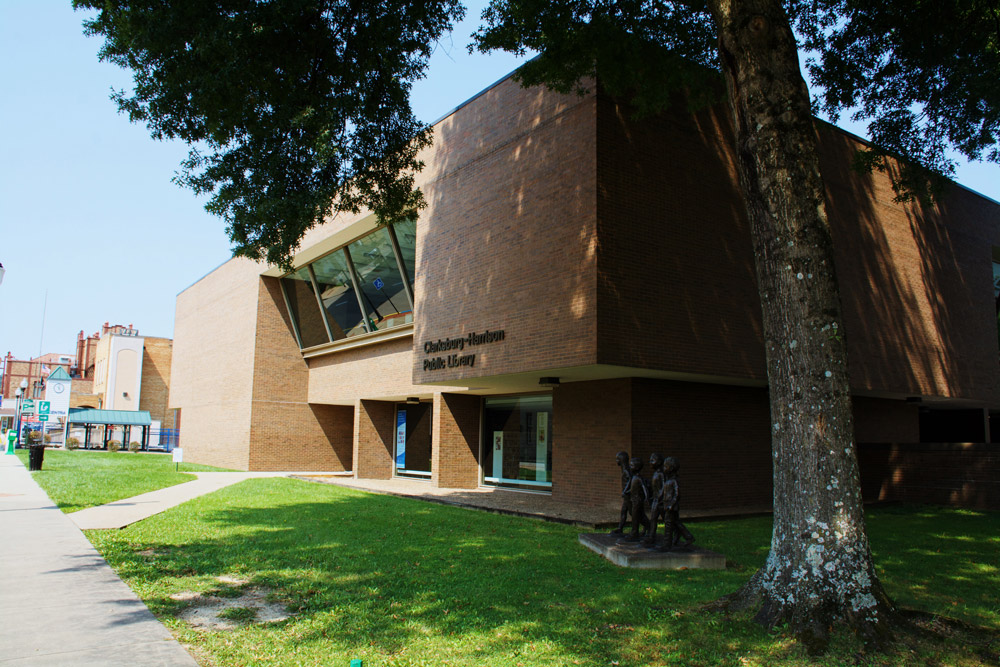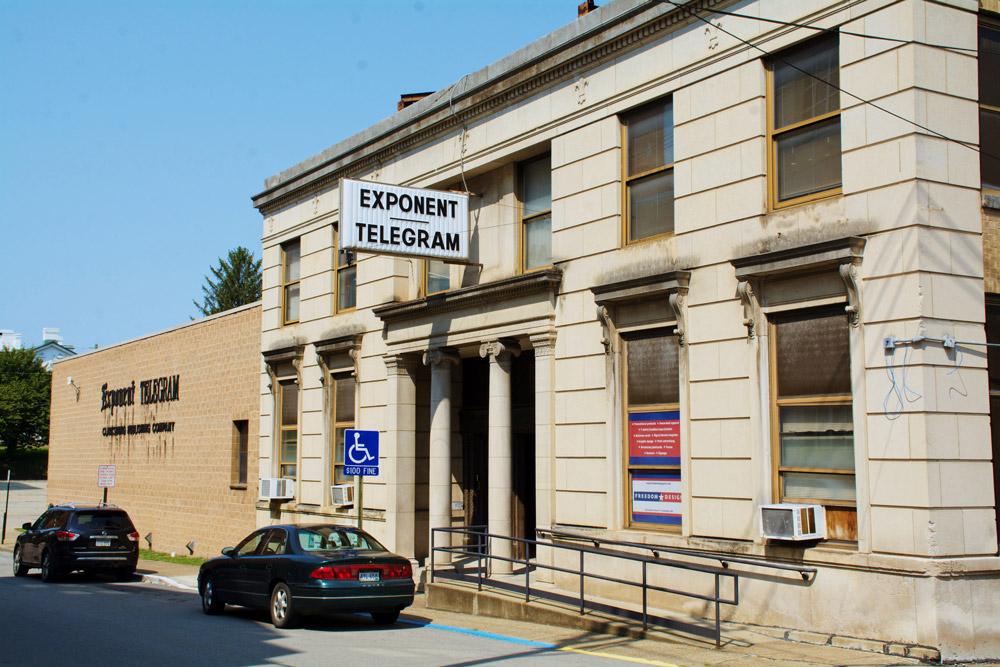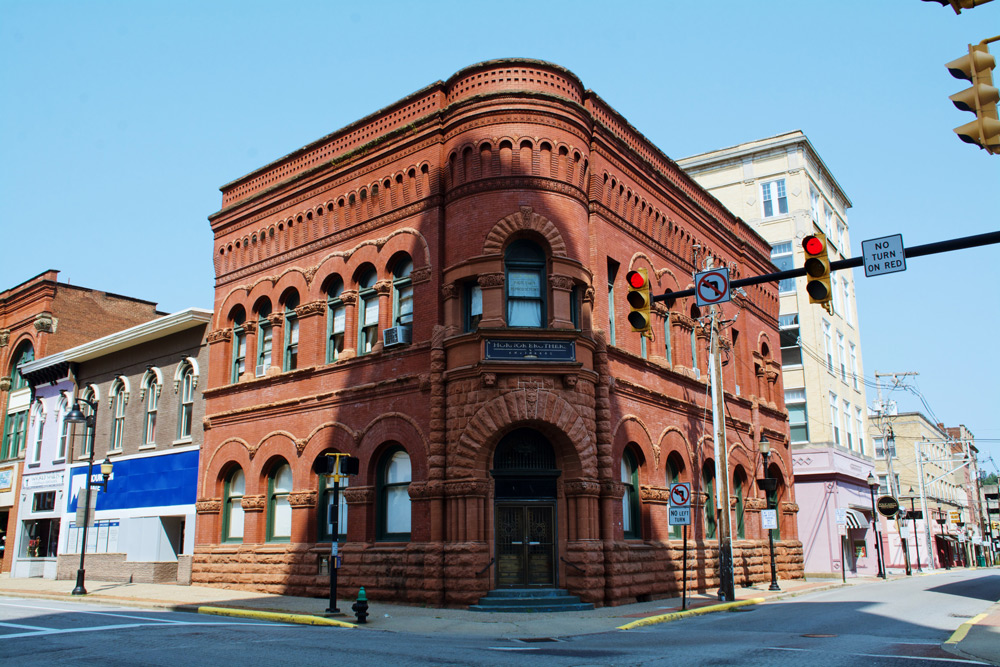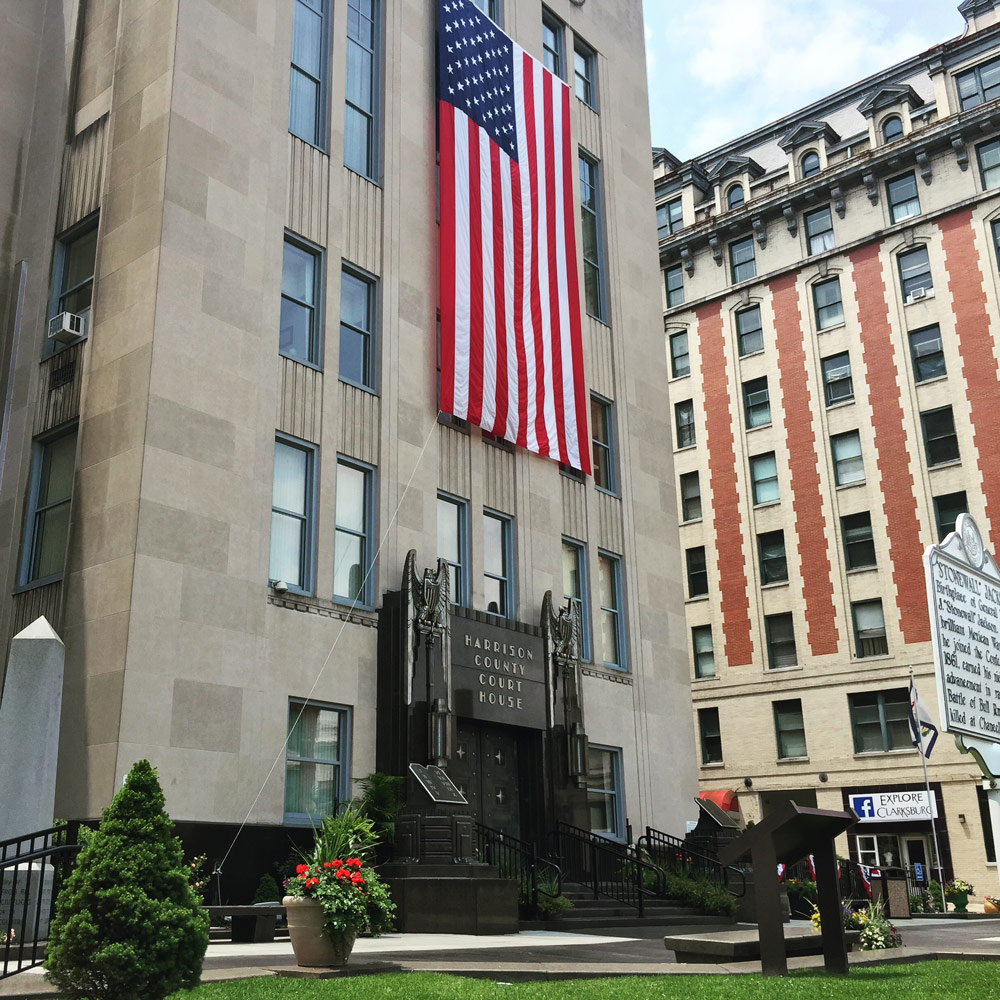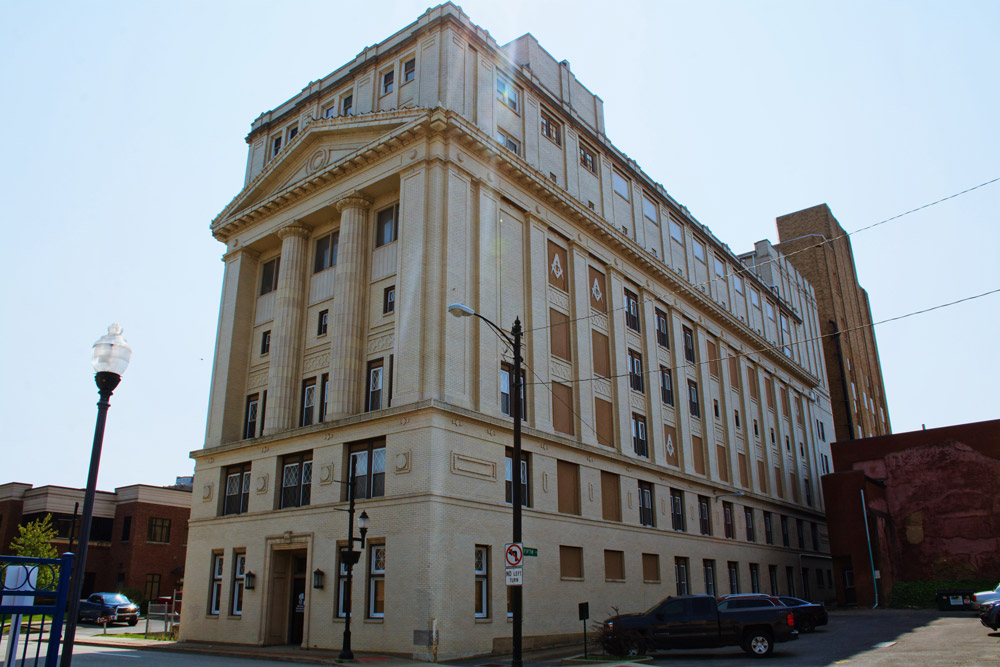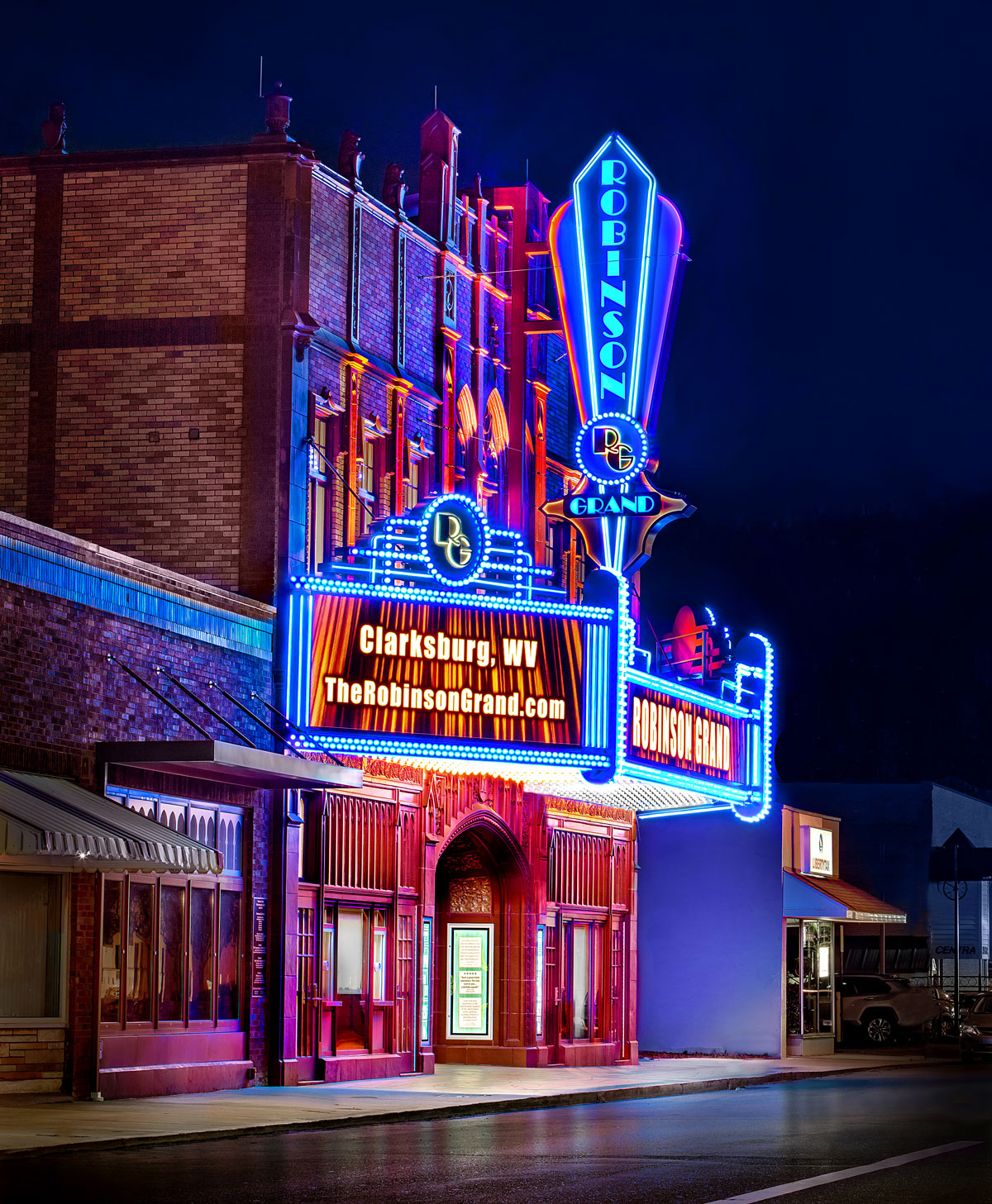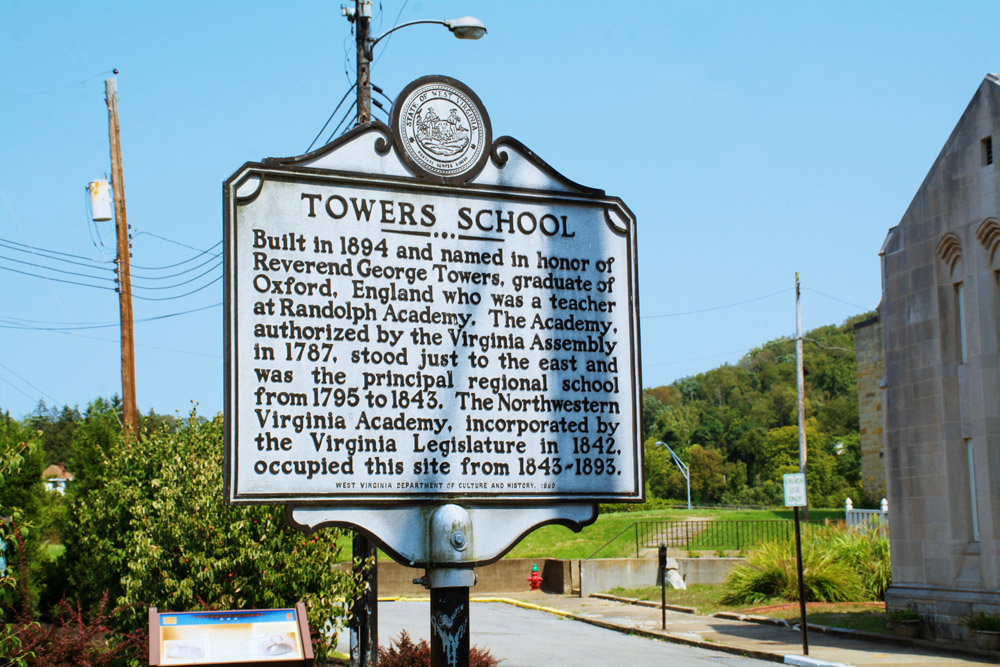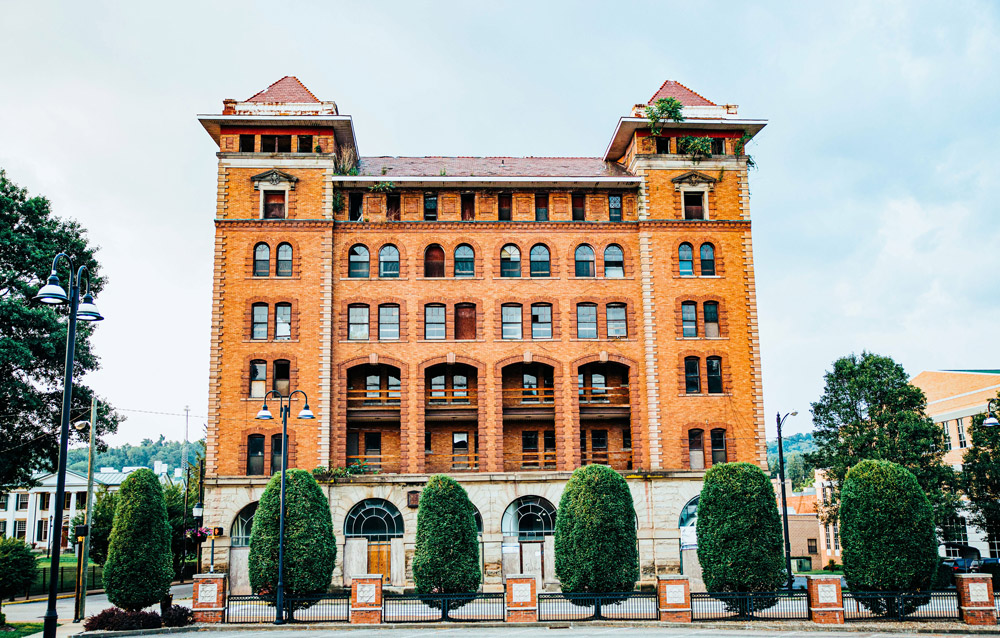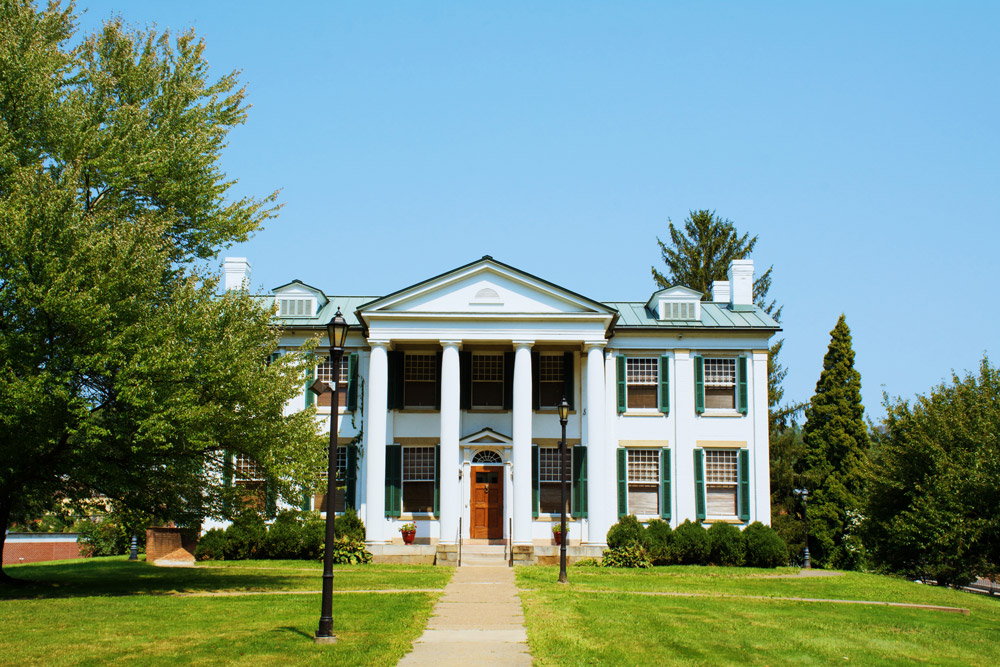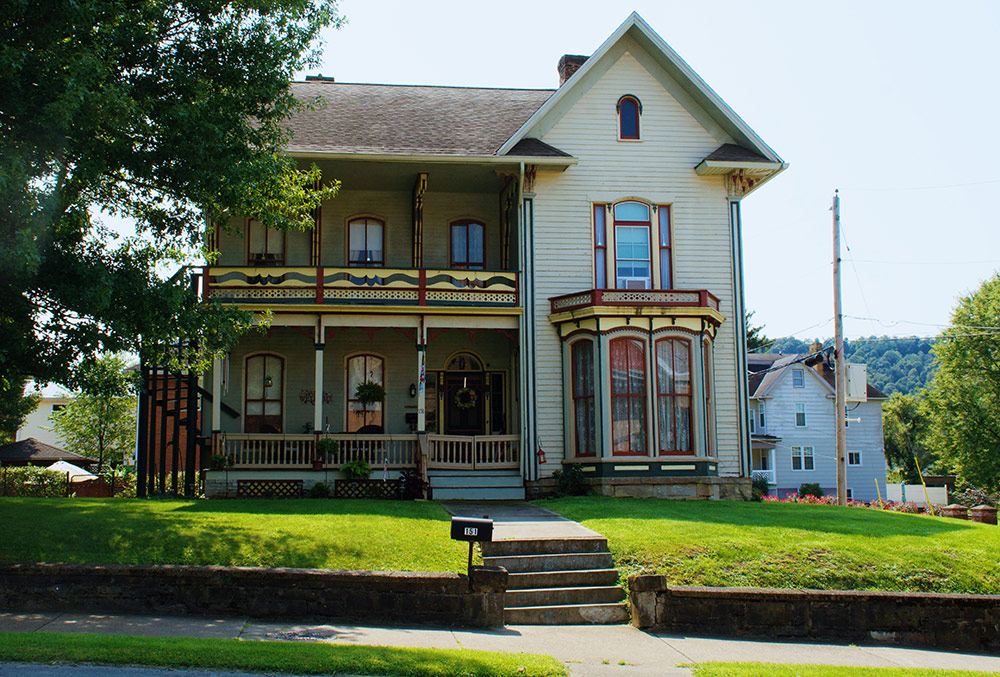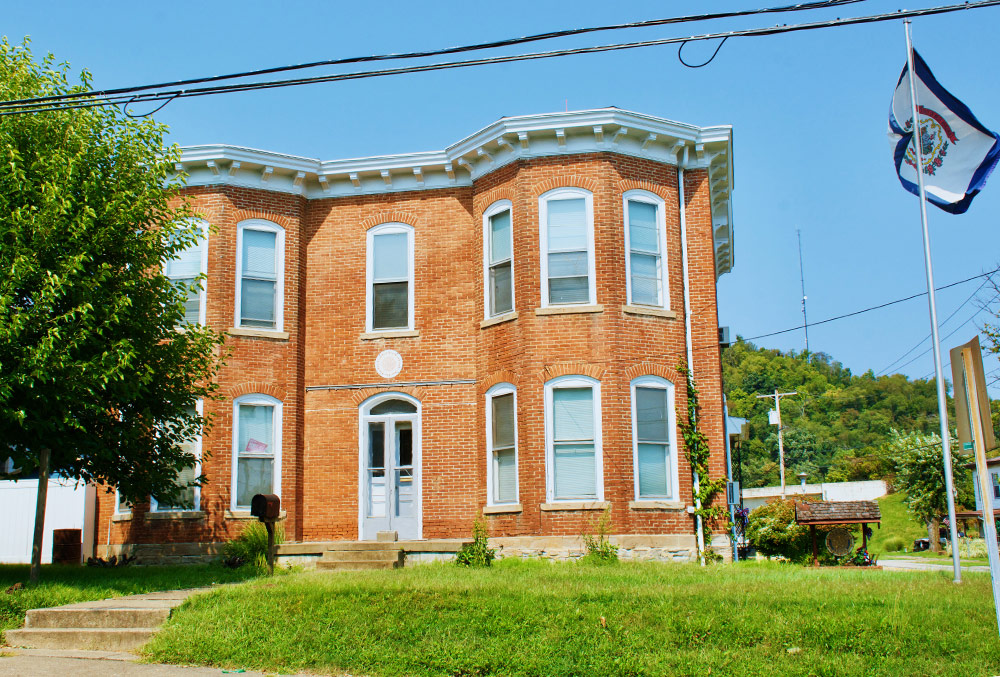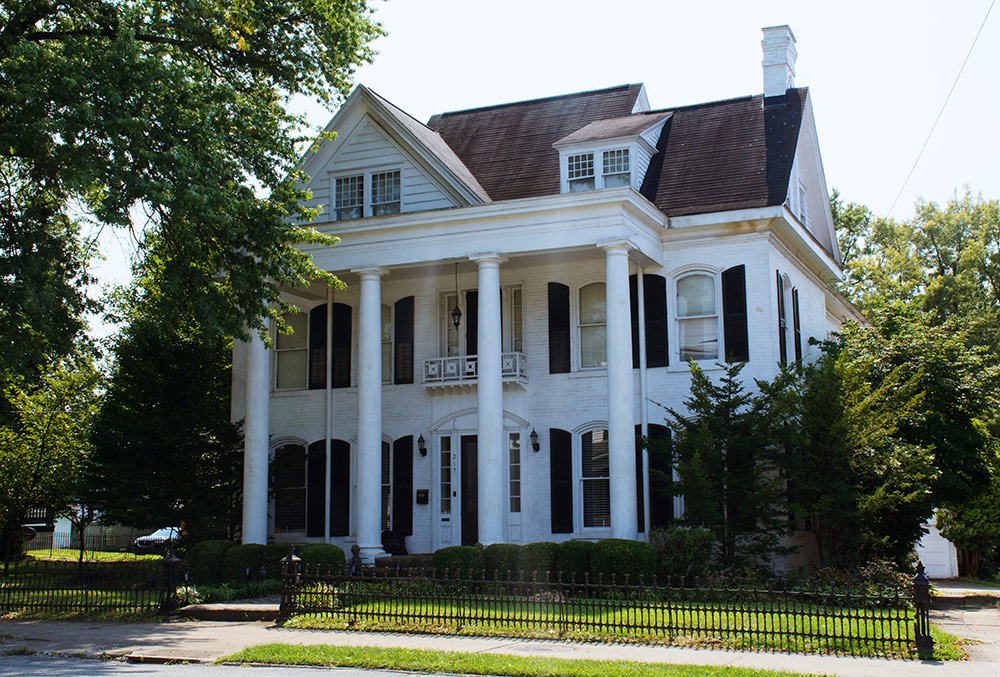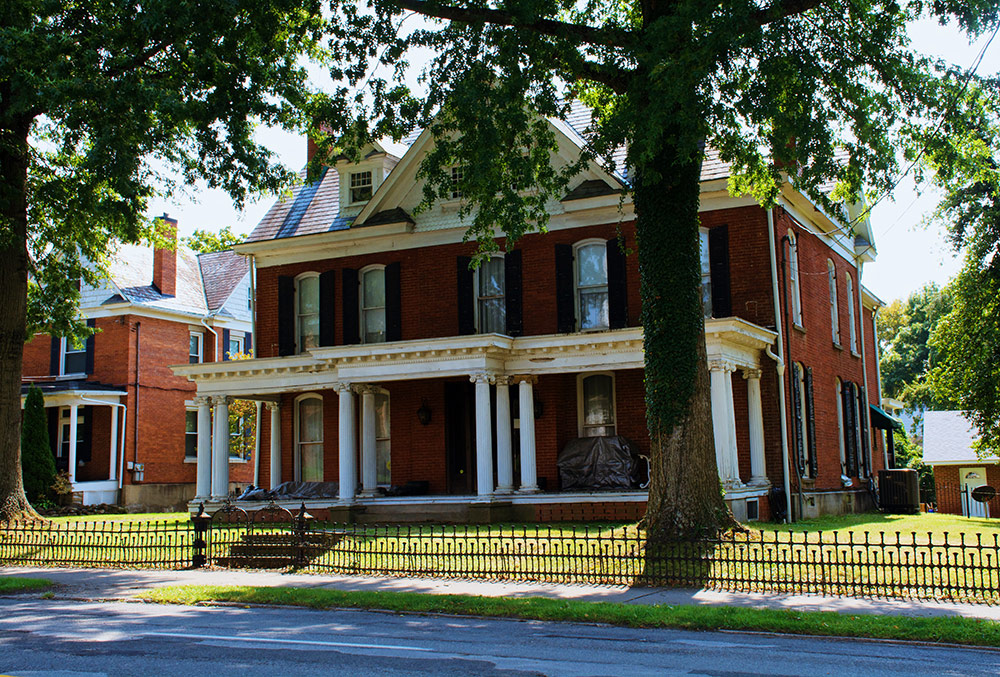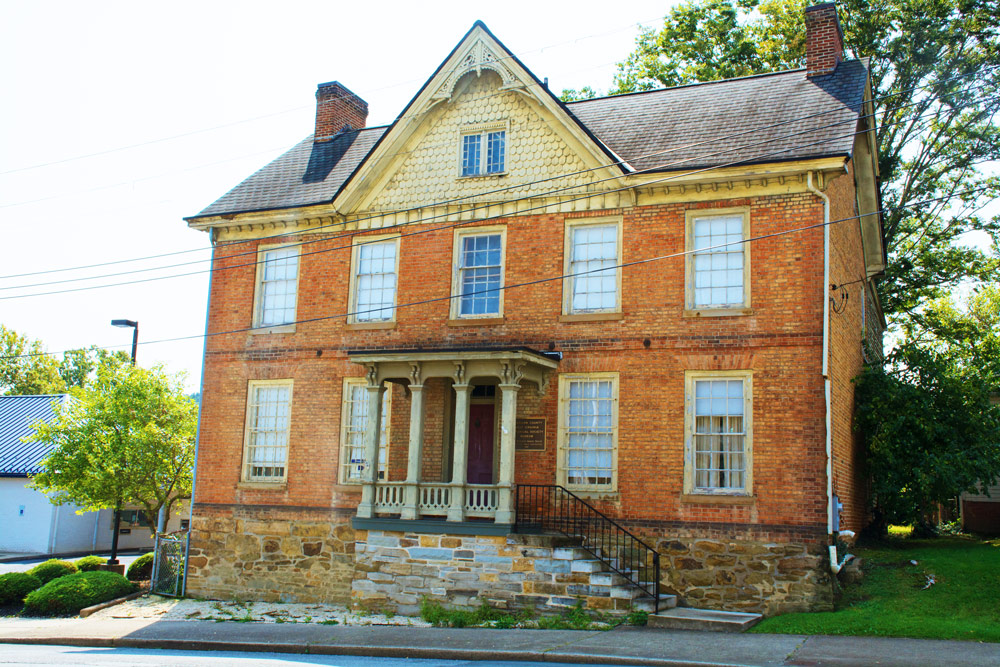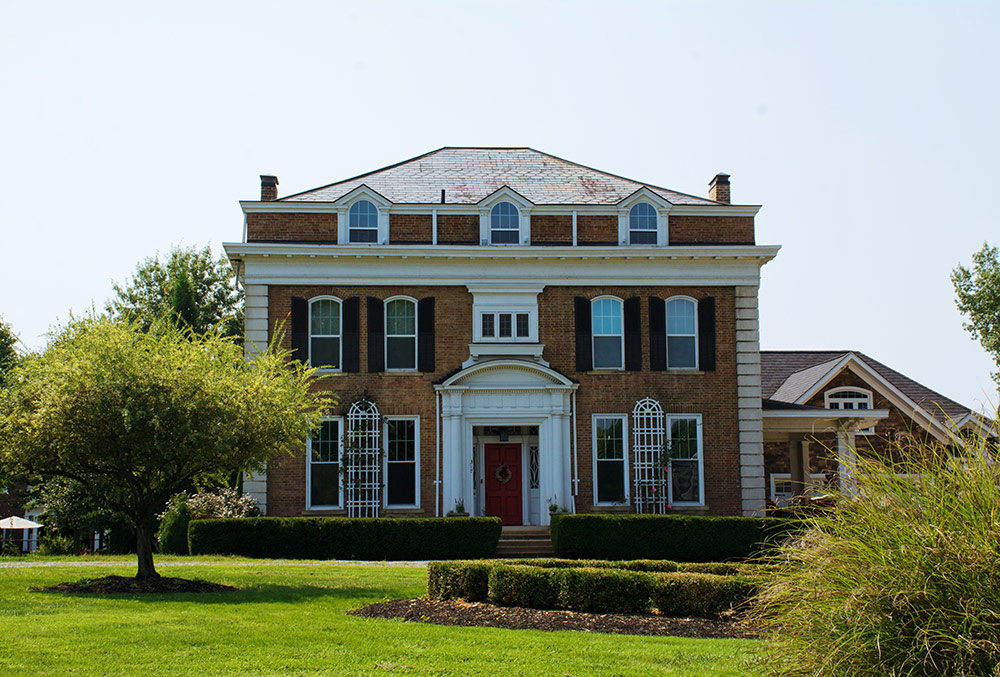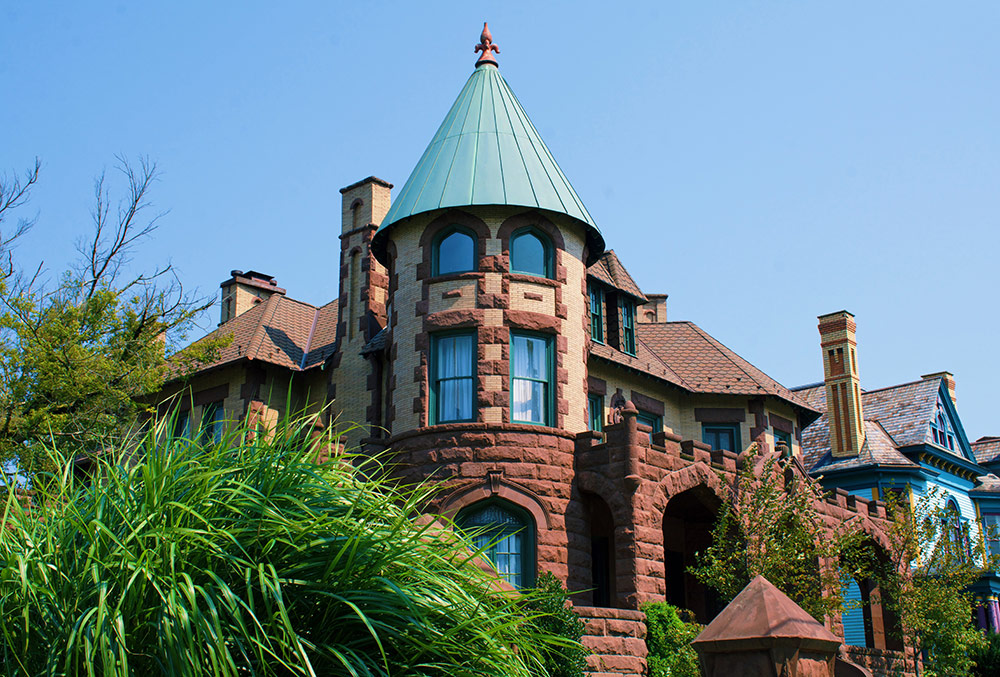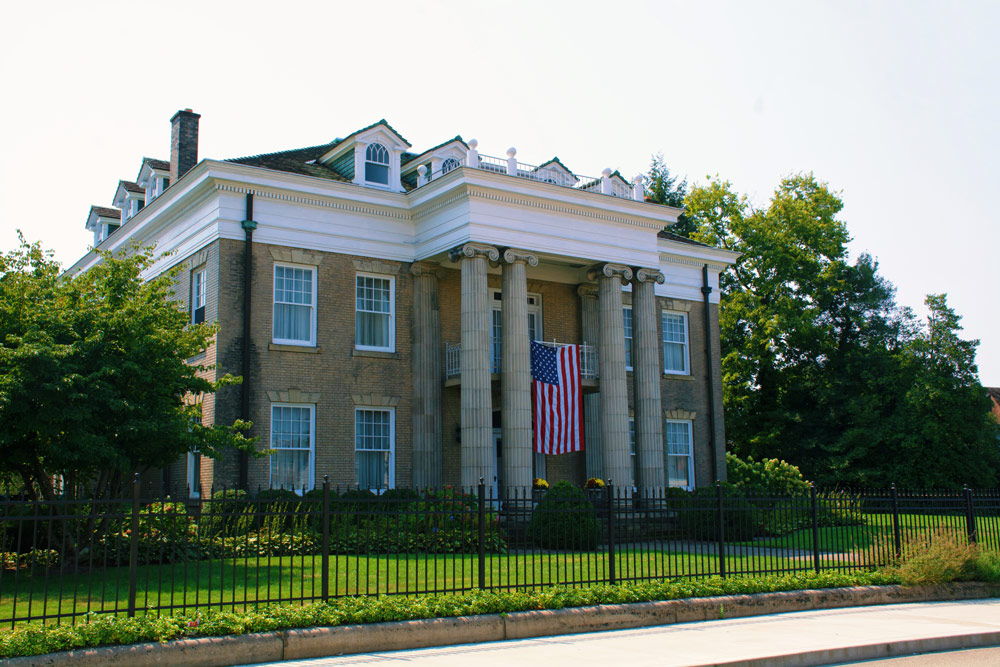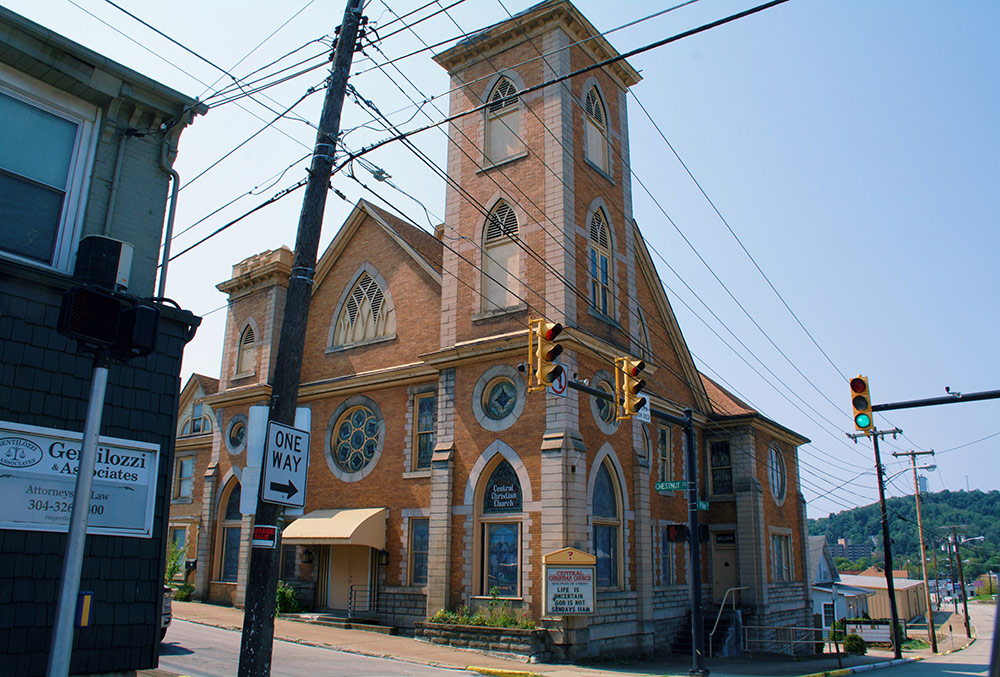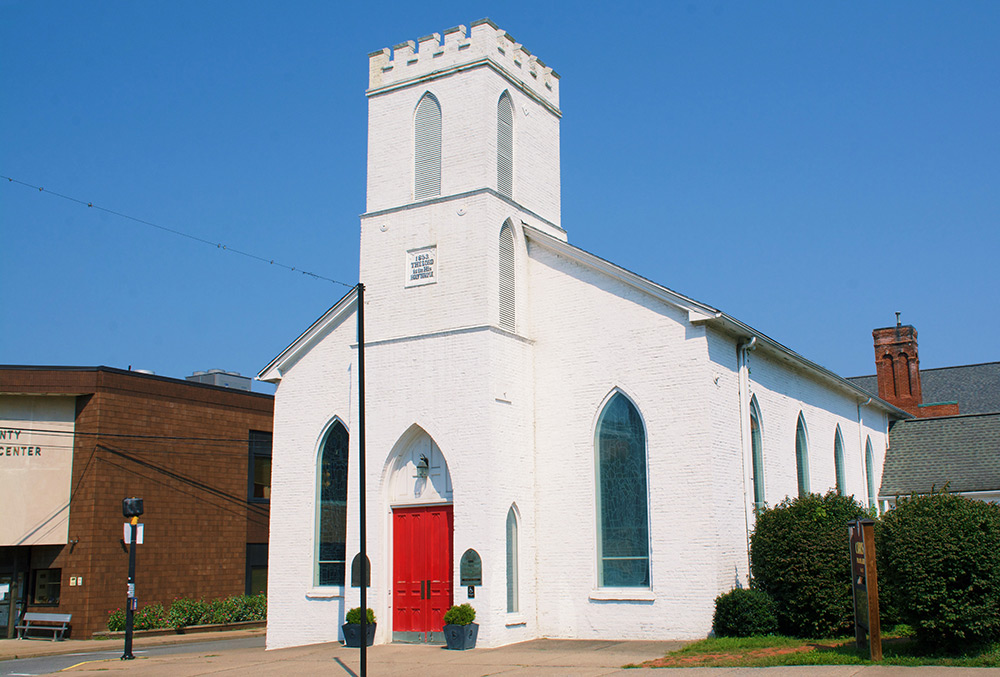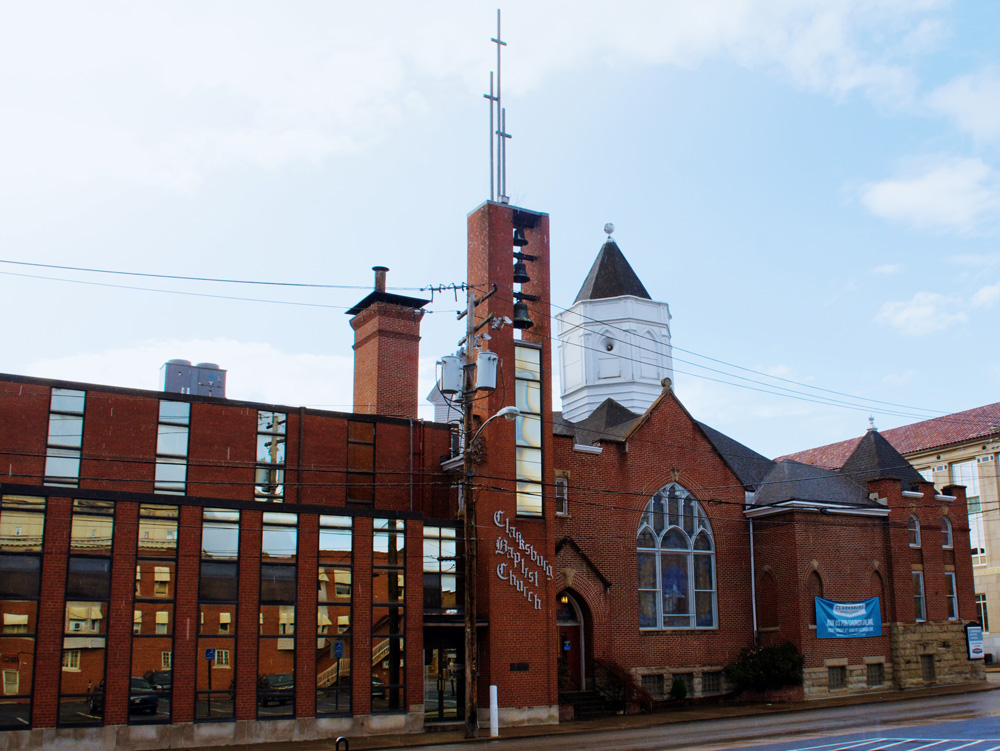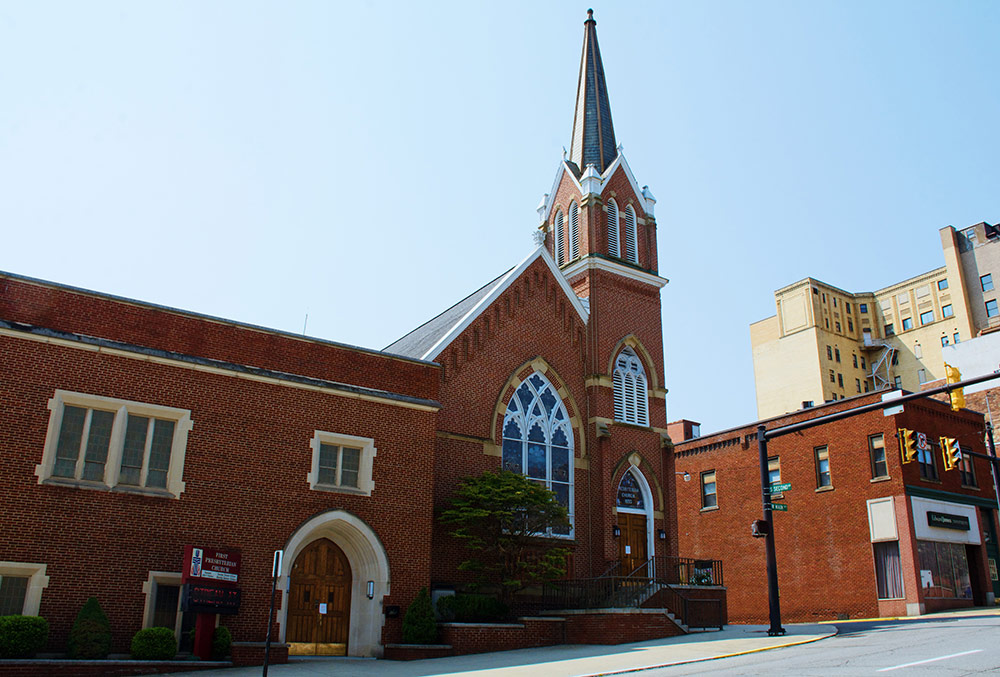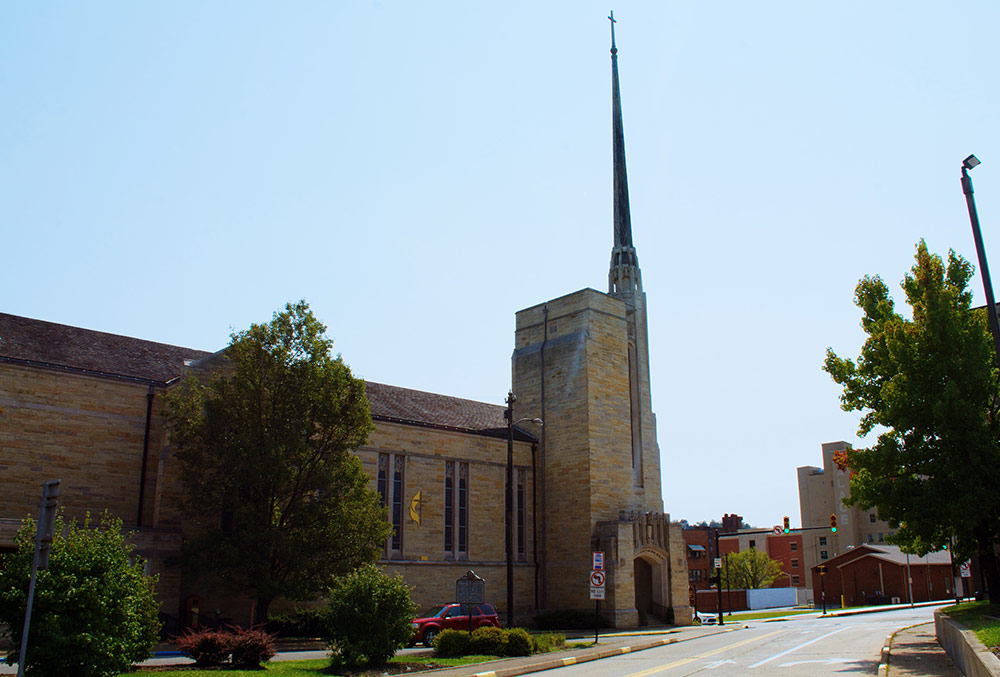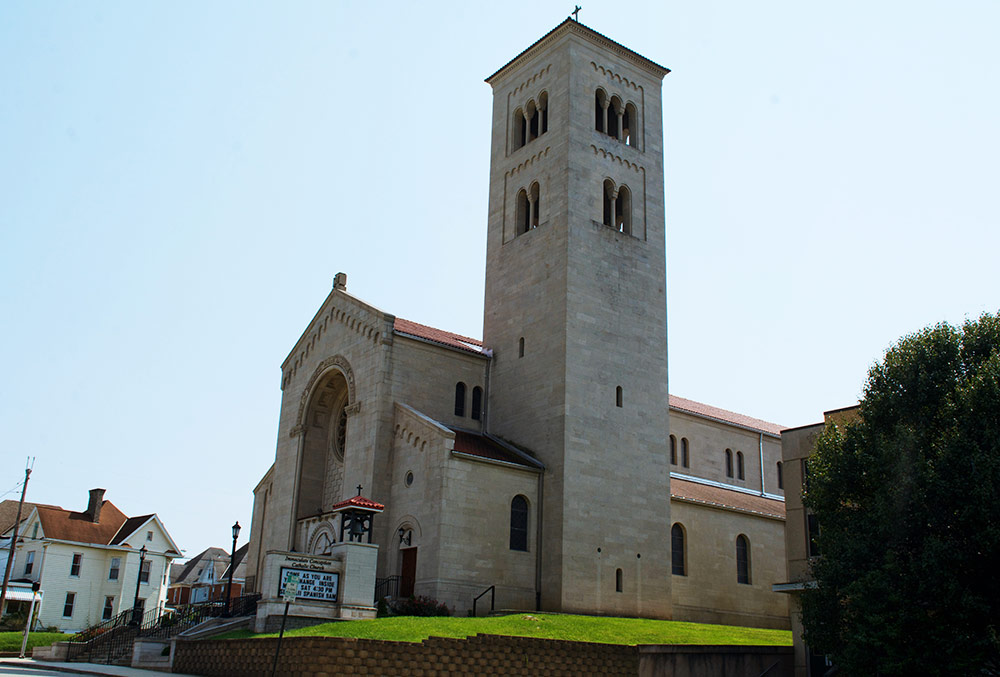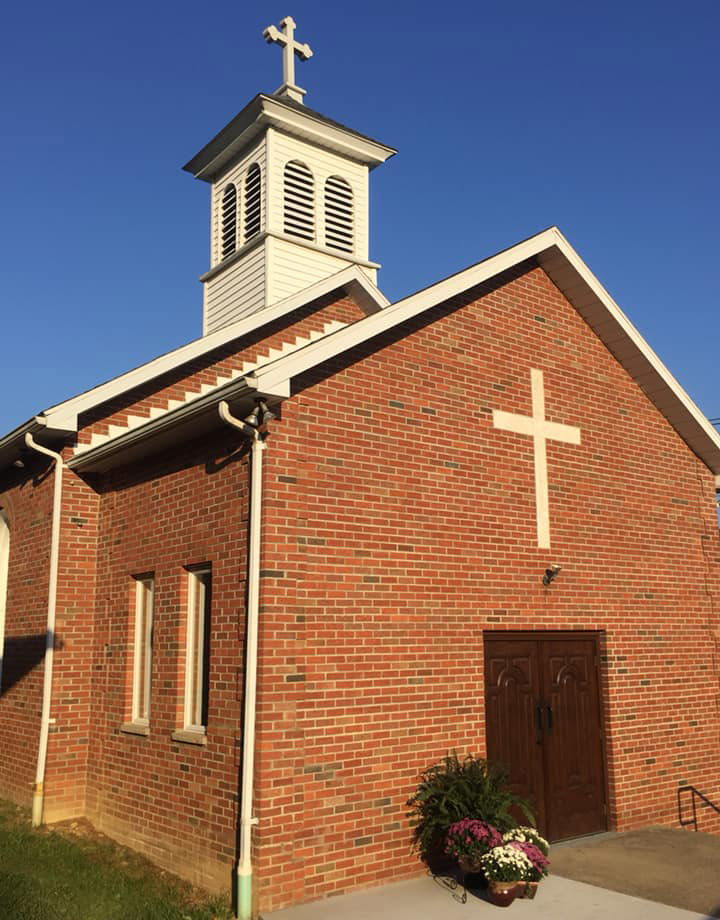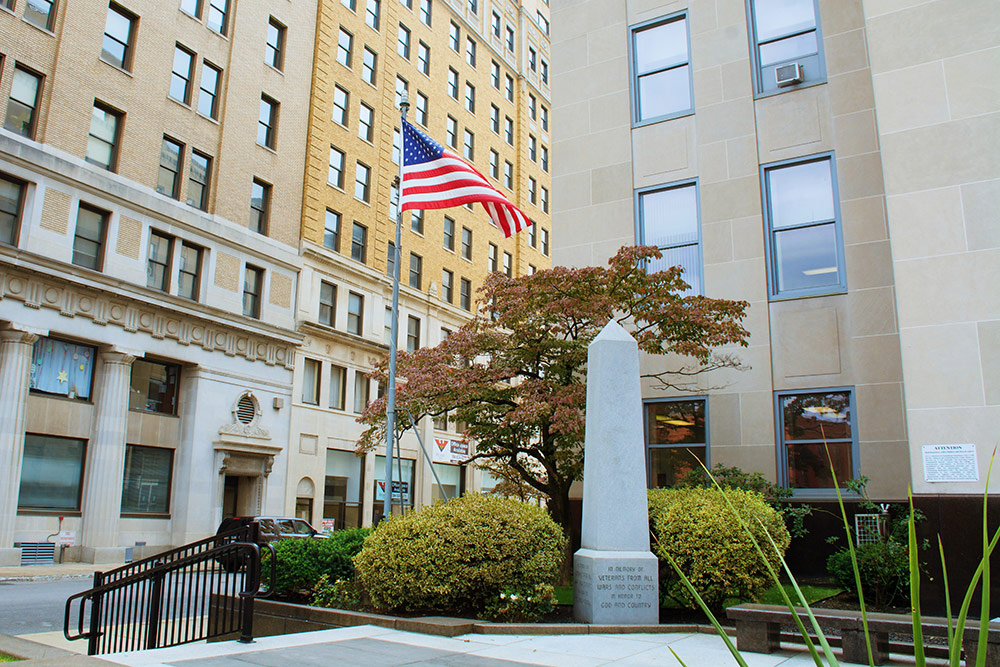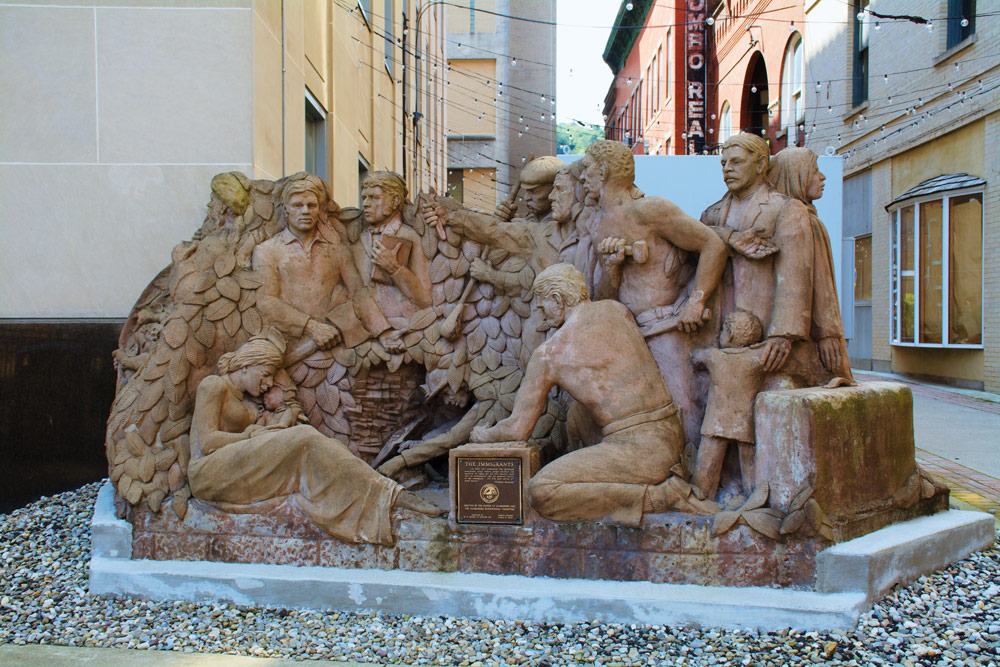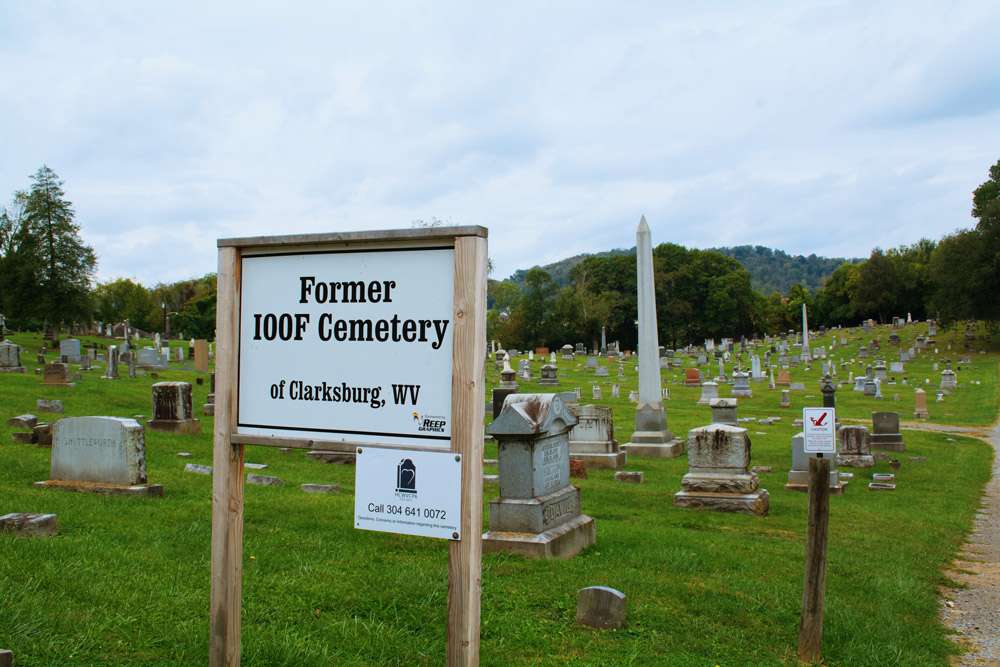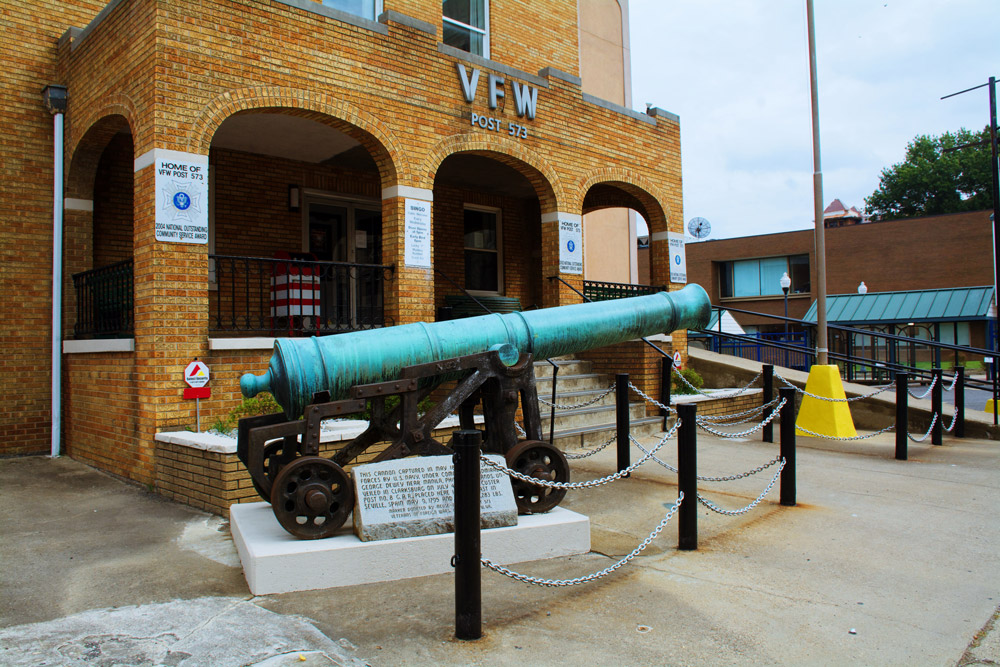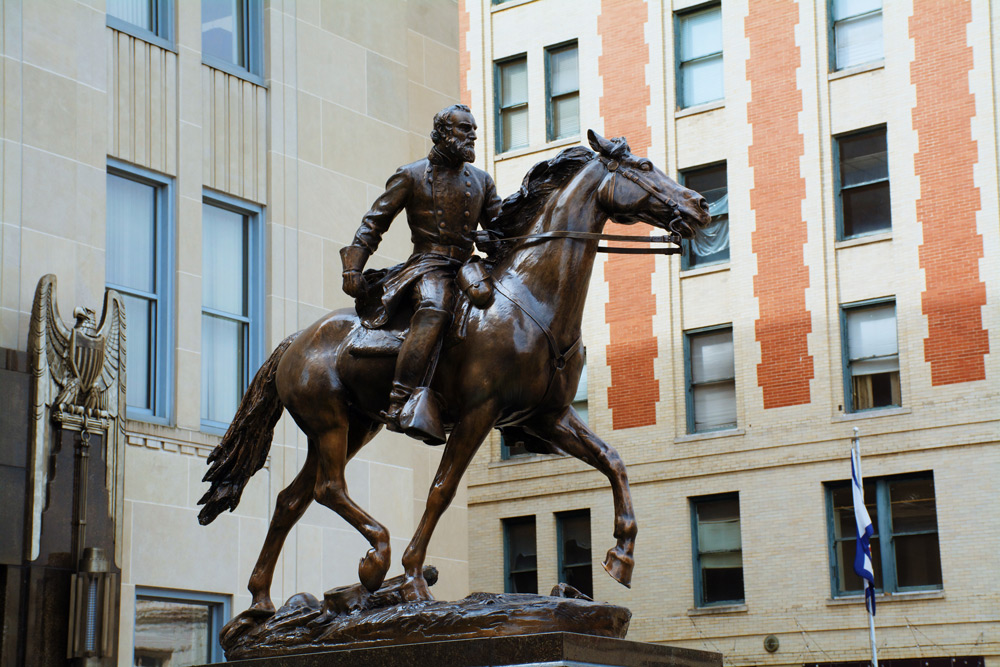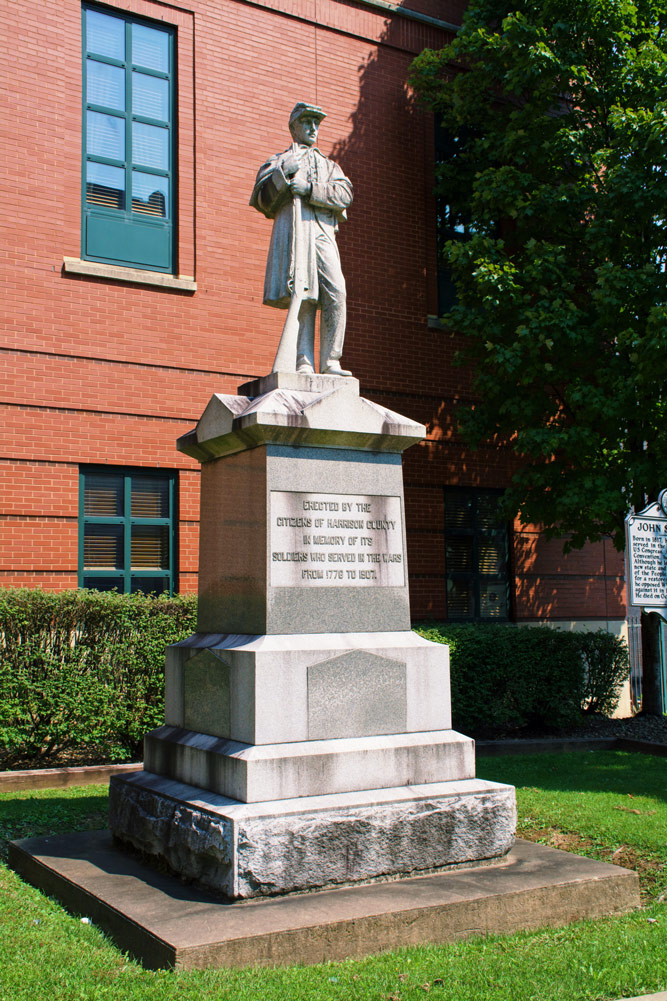Historic Sites
Historic Buildings
Historic Homes
Historic Houses of Worship
Historic Markers & Cemeteries
Historic Buildings
Unlike many of the small cities of North Central West Virginia, Clarksburg saw prosperity before the Civil War thanks to the commerce brought by the connecting road systems and the Baltimore & Ohio Railway. Many century old buildings, that go well back into the 1850s to the 1880s and before, have survived and can still be seen. Three defined historical districts are available for your exploration – the downtown historic district of West Main Street and West Pike Street with its commercial buildings, the Quality Hill historic district of East Main Street with its many century-old residences and the historical district of Glen Elk on the north side that includes the railroad area, its warehouse buildings and what was the historical center of the Italian community. Our rich history is one of our greatest assets.
A.G. Smith Building
This building, constructed sometime between 1890 and 1895, is located at 333-335 W. Main Street and once housed the dry goods and grocery store of Smith, Brown and Company. (Downtown Historic District)
Clarksburg-Harrison Public Library
Designed by Marcel Breuer and completed in December 1975, the library was modeled as a system of interlocking volumes involving projecting and retreating forms that draw the eye round corners. Breuer was one of the most popular architects of the 20th century. His works include art museums, libraries, college buildings, office buildings, and residences. (Downtown Historic District)
Clarksburg Publishing Company
Situated at 324-326 Hewes Avenue, this building is the publishing facility for the Clarksburg Telegram, which was established in 1861 and Clarksburg Exponent which was stablished in 1910. (Downtown Historic District)
Community Bank Building
Located at 300 W. Main Street, this building was constructed in 1894 to house the Merchants National Bank. Nathan Goff Jr. was president of the bank at that time. It is an example of Richardsonian-Romanesque Revival architecture. (Downtown Historic District)
The Despard Building
Located at 306-310 W. Main Street, this building stands next to the Community Bank Building and was built in 1870. (Downtown Historic District)
Empire National Bank Building
This seven story, steel constructed, brownstone and brick building at W. Main and 4th Street was constructed in 1907 and is an example of Renaissance Revival Architecture. It was built by Virgil L. Highland, founder and first president of the bank and its bank charter is the oldest in Clarksburg. The interior was renovated in 1953. (Downtown Historic District)
Harrison County Courthouse
Located at the intersection of E. Main and 3rd Street, the present courthouse was erected in 1931-1932 and is the fourth courthouse to be erected on the same sight. Harrison County was among the first jurisdictions in Western Virginia to support the union prior to the Civil War. A pro-Union meeting was called for November 24th, 1860 at what was originally the Clarksburg Courthouse just after Abraham Lincoln was elected president. (Downtown Historic District)
Masonic Temple
Formally completed in 1914, it is located at the intersection of W. Pike and 5th Street. In 1928, a rear extension and an additional floor were added. (Downtown Historic District)
Robinson Grand Performing Arts Center
Located at 444 W. Pike Street the Robinson Grand Theater first opened its doors on February 7, 1913. The theater was built by the Clarksburg Amusement Company. It was the 13th theater in the United States to be equipped for sound movies around 1927. The theater burned in 1939 and was replaced with its current structure. The historic Robinson Grand Performing Arts Center is now owned and operated by the City of Clarksburg and offers a vibrant and diverse array of programming that engages community members of all ages, businesses, schools, and local organizations. (Downtown Historic District)
Towers School Site
Located at the intersection of 2nd Street and Hewes Avenue, the Towers School was built in 1895. The first school on the site was built in 1795. The Randolph Academy, chartered in 1787, was the first academy west of the Appalachians. In 1841, the building was razed and the Northwestern Virginia Academy was built on the site. The Northwestern Virginia Academy was razed in 1894 and the Towers School was erected. It was named for the Rev. George Towers who was the first tutor at the Randolph Academy. (See the Civil War Trails section for more history on the Northwestern Virginia Academy). (Downtown Historic District)
Union National Building
This 10-story building was built in 1912. In 1966, the lobby was expanded and the entire banking quarters were renovated. The Visitors Bureau is located on street level (Downtown Historic District)
Waldo Hotel Building
Also located at the intersection of W. Pike Street and 4th Street, the Waldo Hotel is a Moorish style building designed by architect Harrison Albright and financed by Nathan Goff Jr., who named it for his grandmother, Jervial Waldo Goff and his father, Waldo Percy Goff. The cornerstone was laid December 6, 1901. (Downtown Historic District)
Waldomore
This Greek Revival style structure was built in 1839 by Waldo P. Goff and is located at the intersection of W. Pike Street and 4th Street. Mary Goff Lowndes was born here in 1849 and spent her entire life at the Waldomore. She named the home Waldomore in honor of her parents Waldo P. and Harriet L. Moore Goff. In 1931, this building became the Clarksburg Public Library. Today, the main library is found next door but the building remains in use by the library. It was entered into the National Register of Historic Places in 1978. (Downtown Historic District)
Historic Homes
Clarksburg features many architecturally beautiful homes dating from the 1800s & early 1900s. The Downtown and Quality Hill Historic Districts, as well as Goff Plaza, boasts many of these century-old residences.
Burton Despard House
Found at 329 E. Main Street, this house was built in 1856 by Colonel Burton Despard who occupied it until 1874. It was later the residence of Duncan Despard, S.R. Harrison, Sr. and Dr. J. M. Bowcock. The R. D. Wilson Family occupied the house from 1919 to 1926, Jennie Wilson from 1926 to 1939, and it is now the Davis- Weaver Funeral Home. Only two families and one business have owned this grand home for over 130 years. The oldest existing home in the Quality Hill Historic District. (Quality Hill Historic District)
Freeman-Stout House
Located at 151 E. Main Street in the Quality Hill area, this Victoria Gothic home was built circa 1872 by William H. Freeman, a brother-in-law to Burton Despard. This home is now known as the Main Street Manor and is just a short walk from the downtown area. (Quality Hill Historic District)
James Clifford House
Located at 270 E. Main Street, James Clifford built this house in 1880 of brick kilned on the property. It was passed on to his daughter, Anna Clifford and then to her son, Dr. James T. Brennan and her daughter Bernadette. It remained in the family until it was sold to the American Legion around 1970. It was built on land acquired from the Jackson family and used as a corral for Union horses during the Civil War. (Quality Hill Historic District)
Keeley House
Believed to have been built in approximately 1871 by George Bastable, it can be found at 217 E. Main Street. (Quality Hill Historic District)
Maxwell-Duncan House
The Maxwell-Duncan House at the southwest end of Quality Hill was built in 1872 by State Supreme Court Justice Edwin Maxwell. Architecturally, the home is a remarkable example of late Italianate, a style that enjoyed an extended period of popularity in West Virginia. The Maxwell-Duncan House was designed by the Philadelphia architectural firm of Sloan and Balderston, which was also responsible for the design of Clarksburg’s Odd Fellows Building and the West Main Street home of Maxwell’s law partner, Nathan Goff, Jr. (Quality Hill Historic District)
Nathan J. Coplin House
Located at 227 E. Main Street, this 2 ½ story Italiante house was built by Colonel Nathan J. Coplin in approximately 1873 on land acquired from John and Martha Bassel. (Quality Hill Historic District)
Paul Robinson-Jackson House
On the northwest end of Quality Hill was built in 1910 and is a classic revival representing some of the finer elements of the beaux-arts design, is the only example of this style in the district. Built by Paul Robinson, VP of Union National Bank, on the site of John George Jackson’s 1801 mansion, which by 1890, had deteriorated into a sad state of repair. Jackson built the mansion for his first wife, Mary Payne, sister of Molly Madison. The new owners returned the house to its original color of white. It had been painted a pale yellow for many years. (Quality Hill Historic District)
Stealey-Goff Vance House
Built in approximately 1807 by Jacob Stealey, a tanner, it stands at 123 W. Main Street. It is possibly the oldest existing house in Clarksburg. Nathan Goff acquired the house by a deed of trust in 1881 and Mary R. Goff owned it from 1885-1908 during which time it was remodeled and Victorian gingerbread added. It remained in Mrs. Goff’s estate until 1935 when Amy Roberts Vance purchased it. It was her residence for 34 years. Of note, it was the home of Cyrus R. Vance who was the Secretary of the Army from 1962 to 1964 and the U.S. Secretary of State from 1976 to 1979. This home was entered into the National Register of Historic Places in 1979. (Downtown Historic District)
Thomas W. Harrison House
Built around 1860 by T.W. Harrison, it is situated at 317 Buckhannon Avenue. T.W. Harrison occupied the home until 1906 and it was later occupied by S.R. Harrison, J. Edgar Long and since 1940, the family of Col. Louis A. Johnson, U.S. Secretary of Defense from 1949-1950. (Goff Plaza area)
Virgil Highland House
Dubbed “The Castle”, this Victorian Romanesque structure was built at 240 E. Main Street in 1903-1905. It is one of the most architecturally striking buildings in the Quality Hill district. This building was constructed by Virgil Highland, who was an organizer and president of the Empire National Bank and president of the company that published both of the city’s two newspapers. The structure was designed by the architectural firm of Holmboe and Rafferty, a company that was located in Clarksburg and who were also responsible for the design of many public buildings and courthouses throughout central West Virginia. (Quality Hill Historic District)
William Brent Maxwell House
Located at 529 W. Pike Street, this Neo-Classical mansion was built in 1912. (Downtown Historic District)
Historic Houses of Worship
Clarksburg is home to numerous historic houses of worship of various denominations dating back to the the 1800s & early 1900s.
Central Christian Church
Located at the corner of W. Pike and Chestnut Street, it was erected and dedicated in 1907. (Downtown Historic District)
Christ Episcopal Church
Found at the intersection of W. Main Street and 6th Street was built under the direction of Reverend Castleman in 1853 on land donated by Burton Despard. It is the oldest original religious facility in Harrison County and famous for its stained glass windows by Tiffany. (Downtown Historic District)
Clarksburg Baptist Church
Organized in 1848, the present building was completed in 1896 at a cost of $6,000 on land purchased from Colonel Alexander C. Moore. The church is situated at the corner of W. Pike and 6th Street. (Downtown Historic District)
First Presbyterian Church
This church was built in 1894 during the pastorate of Rev. S.B. Beardman and is located at the intersection of W. Main Street and 2nd Street. It is the second Presbyterian Church to be built on this site, the first standing from 1832-1838. (Downtown Historic District)
First United Methodist Church
Located at the N.E. corner of W. Pike and 2nd Street, this Gothic structure was designed by architect Harold Wagoner. It was completed in 1956 and replaced the earlier (1909) structure which burned in 1952. (Downtown Historic District)
Immaculate Conception Catholic Church
The present structure of Romanesque architecture is located at the intersection of E. Pike Street and Maple Avenue. The church was dedicated on October 19, 1925. The first Catholic Church in Clarksburg was built in 1865 at the junction of E. Pike Street and Sandy Boulevard. (Quality Hill Historic District)
St. Spyridon Greek Orthodox Church
Located on Factory Street in Summit Park, the first services at this church were held on December 20th, 1920. The interior contains woodcarvings created by the church members. The church serves the Greek Orthodox residents of Clarksburg, Bridgeport, Buckhannon, Elkins, Fairmont, Grafton, Parkersburg and Weston.
Historic Markers and Cemeteries
West Virginia has a high number of citizens who answered the call during times of conflict. Around the area of Greater Clarksburg, there are a number of historic markers and cemeteries where our heroes are interned or their stories told.
For historians and civil war buffs, these are must-see sites.
9/11 Survivor Tree Seedling
Clarksburg, WV is home to a seedling from the 9/11 Survivor Tree discovered in the rubble of Ground Zero in New York City. The Survivor Tree seedling, a Callery Pear which will grow to a towering 40 feet tall, was given to the City of Clarksburg in memory of the thousands of West Virginia coal miners who have lost their lives and to recognize first responders. The Survivor Tree is located in the courtyard of the Harrison County Board of Education in downtown Clarksburg. (Downtown Historic District)
Bow Flag Staff of USS West Virginia
On the Courthouse Plaza, dedicated in 1963, this monument stands as a memorial to all those who gave their lives and in honor of all who served on the battleship USS West Virginia which sank on December 7th, 1941. (Downtown Historic District)
Greenlawn Masonic Cemetery
This cemetery is the resting place of many Civil War soldiers. Current records only indicate Union Soldier burials. Located approximately 10 miles from the Clarksburg courthouse in Salem, WV, take Route 50 west to the Marshville exit and drive 1.6 miles to see it on the left.
Haymond Cemetery
This cemetery contains the graves of Major William. Haymond Sr., a sergeant under Col. George Washington during the French and Indian Wars and as an officer in the Revolutionary war; Sotha Hickman of the Virginia Militia in the Revolutionary War and Major Thomas Haymond, an Indian Scout. Both of the Haymonds were surveyors of Harrison County. This cemetery is located south of Clarksburg off Route 20 on Zack’s Run Road.
Holy Cross Cemetery
This cemetery is the resting place of many U.S. Soldiers including veterans of WWI, WWII, the Spanish American War, and Vietnam. You will find this cemetery at 279 Marshall Street in Clarksburg.
The Immigrant Statue
Depicting the diverse make-up of the population in and around Clarksburg, a statue has been erected on the courthouse plaza. (Downtown Historic District)
Jackson Cemetery
Established in 1801, this cemetery holds the graves of Stonewall Jackson’s father, sister and great-grandparents as well as Dolly Payne Madison’s sister and mother. The Jackson graves are well-marked and are located in the rear of the cemetery. This cemetery is located on South Linden Avenue or accessed from E. Pike Street.
Odd Fellows Cemetery
Opened in 1865, this cemetery contains the graves of many prominent families of Clarksburg and was used as a campground for soldiers during the Civil War. This cemetery is on South Chestnut Street at Washington Avenue.
Simpson Creek Baptist Cemetery
Located at the intersection of Hwy 50 and W.Va 73 is the oldest cemetery in Harrison County with graves dating back to 1782.
Spanish Cannon
To commemorate the Spanish-American war of 1898, a Spanish cannon sits in front of the Post 573 Veterans of Foreign Wars building at 430 W. Pike Street. This cannon was captured in May 1898 by U.S. Naval Forces under the command of Admiral George Dewey near Manila in the Philippine Islands. The cannon was cast in Seville, Spain in 1795 and weighs 6,283 lbs. (Downtown Historic District)
Thomas Stonewall Jackson Statue
Thomas J. “Stonewall” Jackson was born in Clarksburg on January 21, 1824. In 1953, a statue of Lt. General Jackson was erected on the Harrison County Courthouse plaza, just across the street from the location of the Main Street home where he was born. (Downtown Historic District)
Interested in a Civil War tour?
Dive deep into Civil War history with the Stonewall Jackson Tour, a captivating journey through Clarksburg's landmarks, culminating in a vibrant exploration of downtown attractions.
Learn More 304-641-4549
Union Civil War Monument
This monument, located in front of the Clarksburg City Building at 222 W. Main Street, was dedicated on May 30th, 1908 and was erected by the citizens of Harrison County in memory of its soldiers who served in wars from 1776 to 1907. (Downtown Historic District)

